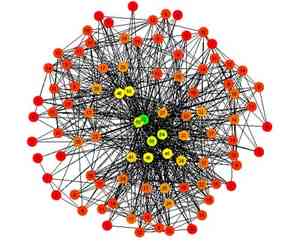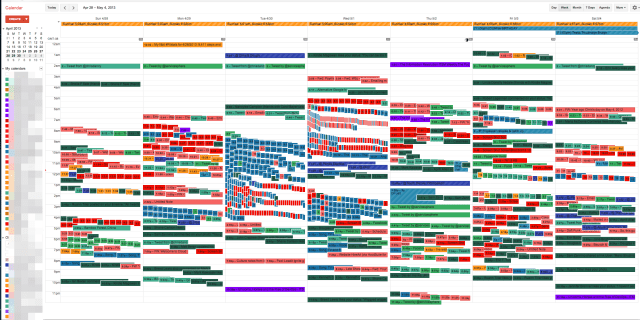Scott Brown had a question about the number of parked domains he was hearing about: Do the domain providers have an email reply set up? What he found has led to the launch of Bounce.io, a five-month company that harvests 20 to 30 million bounced emails per day in what is amounting to an advertising treasure chest and a very rich, big data honey pot.
Bounce.io takes bounced emails and does two things. It adds advertising to the bounced emails that actually came from people who, for whatever reason, were sending an email to the parked domain. And the email from spam bots gets sold to data security companies that view it as a fresh source never tapped before. For them, it’s an organic big data honey pot that is continually refreshed.
The story here is about a company that stands to make a fortune in email advertising. But even more so, Brown’s experience points to the power of “data exhaust,” all that excess data that trails us. It’s data that is one-dimensional by itself. In its mass, the data has economic meaning and reflects more about us than we might think.
The Bounce Story
Brown, who I met at the Glue conference this week, explained that his curiosity piqued when he talked to a local Denver businessman who owed more than 50,000 parked domains. Another friend, who worked as a product marketing manager for a big consumer brand, had about 4,000 domains for promotions and all the permutations of the consumer brand’s domains.
Brown decided to create a little Node.js app to capture inbound mail that would send an email notifying the sender of a bounced message. He asked his colleagues if they would install it on 12 domains. They agreed and in the first week they saw 200,000 emails come in per day.
Brown applied a rules engine he developed at a prior company and used it to separate the machine-generated email from the ones sent by humans. He learned that, surprisingly, 8 percent of the email came from actual people.
They ran the collection and started sorting and identifying mail from people. As an experiment, they started to send legitimate bounce messages and apologizing for the bounced message. They then tracked the open rate and it was 60 percent.
“It’s just human nature to check it,” he said. “The click rate was only 2 to 3 percent but 2 percent makes a ton of money. We put the first ad in and ran it over a week to a few hundred thousand emails.”
It was a $50 back-to-school ad. Nobody had ever advertised to bounced email senders. He said they went back to people he knew in the domain business and asked for all the domains they had. By February they were checking 4 million domains. Today, the company tracks 8 million. The company now sees 20 to 30 million inbound emails per day and sends out 2 million bounce-back messages with ads. The open rate is about 60 percent. Servers are running on AWS to sort and sift the data.
The remaining 92 percent of the data gets fed into the big security vendors. It’s a monthly feed. The advertising is the bigger money, but the data business is a $20 million business.
The real target is the ISPs. Time-Warner Cable has 10 million subscribers. Each subscriber sends 10 emails a day. Of that email, 20 percent are bounces. That comes out to 20 million emails per day. Brown said the goal is to get ISPs to send these emails so they can put an ad in it. AN ISP like Time-Warner could make $1.50 per subscriber per year in net profit. “That’s $15 million a year in found money,” Brown said.
With the ISPs, the math gets turned upside down. Now there is a much bigger pie because 92 percent of the emails are from humans.
“And that’s a billion-dollar business,” Brown said.
Brown said they know this is a really good idea and others will see it as a lucrative space. But their service is built and ready to scale. Sedo or companies like GoDaddy could be competitors. Google and Yahoo! could be as likely to build or buy the company. Security companies might compete as it is such a great play for big data.
The hitch: Bounce.io is a third-party to the data. They depend on others for it. And though they have had success with the domain parkers, it’s not a large market.
“We are trying to push the ISP story and trying to brand up bounce intelligence.”
Brown has a background in “big email routing.” He wrote a mail transfer agent that moves a lot of mail for Wall Street powerhouses. His partner invented a tracking tool to see if email gets delivered to an inbox.
It’s people like Brown who seem to roam the hallways at conferences like Glue. At the conference, I talked with several people about this new kind of data exhaust that is emerging. It comes from everywhere now. Bounced emails are a good example but there are infinite other forms that are creating a deep new data reality.
The human condition demands that we communicate. It’s why people tweet about something cute the cat did or post on Facebook that they bought some oranges at the market. We need that communication to exist.
The Quantified Human
Chris Dancy works for BMC Software in the Office of the CTO, developing new products and building on the principles of the quantifed enterprise. A good bit of his inspiration comes from automation tools he uses to track and quantify his own data exhaust. Everything can be quantified, measured and analyzed. And so he is doing it himself. As Klint Finley wrote in Wired, Dancy calls himself the most quantified human on earth. It has helped reinvent who he is by using the data exhaust that he trails to give him a deeper understanding of himself and the future of work.
Dancy uses sensors to track his movements. His dog has a sensor to track where it is in the house. Sensors in his home are programmed so the music can be turned on and off during the day. Lights in the house turn on when he walks into the house. He uses IFTTT and Zapier to connect apps that feed into Google Calendar, Evernote and Excel.
Both Brown and Dancy have discovered the power of data exhaust. Brown and his business partner are using it to harvest the data from bounced email, analyzing it and recycling it back into advertising networks. The data is getting packaged for data security companies to better understand spammers and the dark world they come from. Dancy uses his own data exhaust as a means of empowerment. The data gives him insights into ways that he can better exist and how the future of work will transform.
What Brown and Dancy do also says something more about us. We need to be better at how we treat the data we willingly leave behind. We let Twitter, Google and Facebook take our data and use it as they please. It may be time for us to capitalize on the power of data exhaust so we can use it ourselves and perhaps not be so willing to let it trail from us with such disregard.
(Feature image credit to Grant McCracken and his blog post about how social networks work and the puzzle of data exhaust.)

